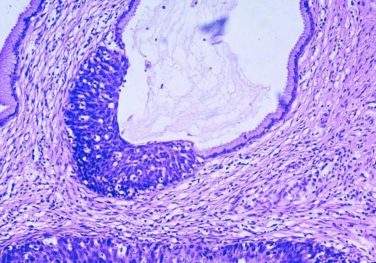Some of the bigger studies in juvenile idiopathic arthritis at this year’s annual meeting of the American College of Rheumatology deal with choosing treatment, predicting therapeutic response, and birth outcomes.
These topics include evaluations of treatment strategies in patients who have not been treated with disease-modifying antirheumatic drugs, the safety and effectiveness of intra-articular biologic therapy, predictors of response in patients with nonsystemic juvenile idiopathic arthritis (JIA), and birth outcomes among women with a history of JIA.
Those studies, described below, are just a sampling from the numerous sessions on JIA and other pediatric rheumatic diseases that will be offered at the meeting.
Comparing treatment strategies
Investigators from the Netherlands will be presenting 3-month results of the Best for Kids Study (abstract L2), which is comparing three disease-modifying antirheumatic drug (DMARD) strategies in almost 100 DMARD-naive patients with recent-onset JIA, aged 5-7 years at enrollment, over 2 years. The strategies were sequential DMARD monotherapy, starting with sulfasalazine 50 mg/kg/day or methotrexate 10 mg/m2/week, based on physician’s preference; combination therapy with methotrexate 10 mg/m2/week and 4 weeks of prednisolone bridging 0.5 mg/kg/day, tapered to nothing over 2 weeks; and combination therapy with methotrexate 10 mg/m2/week and etanercept 0.8 mg/kg/week. At 3 months, significantly more of the patients initially treated with a combination of methotrexate and etanercept achieved an ACR Pediatric (Pedi) 50 (52%) and an ACR Pedi 70 (34%), compared with those initially treated with methotrexate (39% and 16%, respectively) or DMARD monotherapy (23% and 10%, respectively). Toxicity was similar in the three treatment arms and no serious adverse events were reported.
Intra-articular knee injections with infliximab
Intra-articular injections of infliximab were safe and effective in treating the knee joints in patients with JIA refractory to standard treatment, according to the results of a small study (abstract L14) that will be presented by investigators at Children’s Hospital Srebrnjak, in Zagreb, Croatia. The study evaluated treatment with intra-articular injections of infliximab at a dose of 50 mg or 25 mg, administered to 22 joints (including 20 knee joints) in 14 patients with monoarticular or oligoarticular JIA who were on standard therapy (NSAIDs, DMARDS, glucocorticoids) and had signs of synovitis. The presenter will also discuss the utility of 3-D/4-D musculoskeletal ultrasound, which was used to evaluate some of the knee joints in the patients.
Etanercept for enthesitis-related JIA
Also to be presented are the results of a multicenter German study (abstract L15) evaluating etanercept in 41 patients with the enthesitis-related arthritis form of JIA, which found that etanercept was “highly effective” in these patients. During the first 24 weeks, all patients were treated with etanercept (a weekly dose of 0.8 mg/kg, administered subcutaneously to a maximum of 50 mg), and almost 60% of the patients achieved a Juvenile Arthritis Disease Activity Score meeting remission criteria. Almost all achieved a ACR Pedi 30 response and were randomized to continued treatment or placebo during the subsequent 24-week randomized, double-blind, placebo-controlled withdrawal phase of the study. Most of the patients who continued treatment had no flares during this time, compared with about half of those switched to placebo, and while this difference was significant, discontinuing treatment may be an option to discuss in this group of patients, according to the authors.
Predicting anti-TNF treatment response
A study conducted by investigators in the Netherlands, United Kingdom, and Germany, provides information on how the MRP8/14 serum level may be a useful marker to help identify patients more likely to respond to biologic therapy and those who are less likely to experience disease flares if treatment is discontinued. In the study of 89 patients with JIA (abstract 932), baseline MRP8/14 serum levels were significantly higher among the 71 patients who responded, compared with the 18 nonresponders to tumor necrosis factor (TNF)–blocker therapy (etanercept). Moreover, levels did not change significantly during treatment among nonresponders, but levels significantly decreased among the responders. And in the patients with MRP8/14 levels available at the time they stopped treatment, those with higher levels were at a greater risk of experiencing a flare. Most of the patients in the study had rheumatoid factor–negative polyarthritis (33 patients) or had extended oligoarthritis (24). Others had rheumatoid factor–positive polyarthritis (13), persistent oligoarthritis (5), enthesitis-related arthritis (4), or psoriatic arthritis (10).
Birth outcomes in women with a history of JIA
The results of a Canadian retrospective cohort study that examined administrative data covering the entire population of Quebec indicates that women with a history of JIA should be monitored closely during pregnancy. The study (abstract 1866) compared birth outcomes during January 1983-December 2010 among 1,756 women who had been diagnosed with JIA and about 700 matched controls. Their mean age at delivery was 25 years (range was 16-46 years). With the exception of stillbirths, the rate of adverse birth outcomes was higher among those with a JIA history, which included having a premature baby (relative risk, 1.18), a small-for-gestational-age baby (RR, 1.19), and a baby with a major congenital anomaly (RR, 6.49). Both neural tube defects and congenital heart and circulatory defects were particularly high among the women with JIA, according to the authors, who said that more research is needed to evaluate the possible effects of JIA on pregnancy and the effects of medications in childhood, including the peripubescent period, on birth outcomes.




